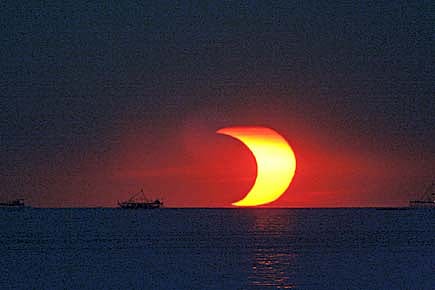Newton Eclipsed

Ninety years ago, observations made during a total solar eclipse overturned our view of the world
There are certain moments in science when the world changes. Ninety years ago, a solar eclipse achieved precisely that, when observations taken on a remote African island of Principe confirmed Einstein's general theory of relativity. The Times declared, 'Revolution in Science, New Theory of the Universe, Newtonian Ideas Overthrown'. Two days later The New York Times stated 'Lights all askew in the heavens/Men of science more-or-less agog/Einstein theory triumphs'.
Astronomer Richard Massey, from the Royal Observatory, Edinburgh, is travelling to Principe with colleagues to mark the day of the observations conducted by Sir Arthur Eddington which confirmed that light does not always travel in straight lines but bends under gravity in the proximity of massive objects such as the sun. Of course, Massey will not be able to witness the one event that was crucial to this observation, the total solar eclipse of 29 May 1919. According to the general theory of relativity, which considers time a dimension in addition to the three dimensions of space, massive objects such as the sun have the effect of bending this four-dimensional space-time in their proximity. As a result, while light, as in the Newtonian Universe, continues to travel the shortest distance between two points, this distance is no longer a straight line due to the curvature of space-time.
Eddington had to wait for the eclipse to ensure this effect could be observed. Seen from Earth, the sun moves against the stars. It is possible to photograph the stars when they are far from the sun and then to photograph them again when the sun is close to them. In the second case, light from the star passes very close to the sun and if Einstein is right, it follows a curved path. When comparing the two photographs, the position of the two stars should not match. The problem is, under most circumstances it is impossible to photograph stars very close to the sun due to its brightness. Only a total eclipse allows this. Eddington's observations confirmed what Einstein's theory had predicted; our world was changed forever.
2025 In Review
12 Dec 2025 - Vol 04 | Issue 51
Words and scenes in retrospect
